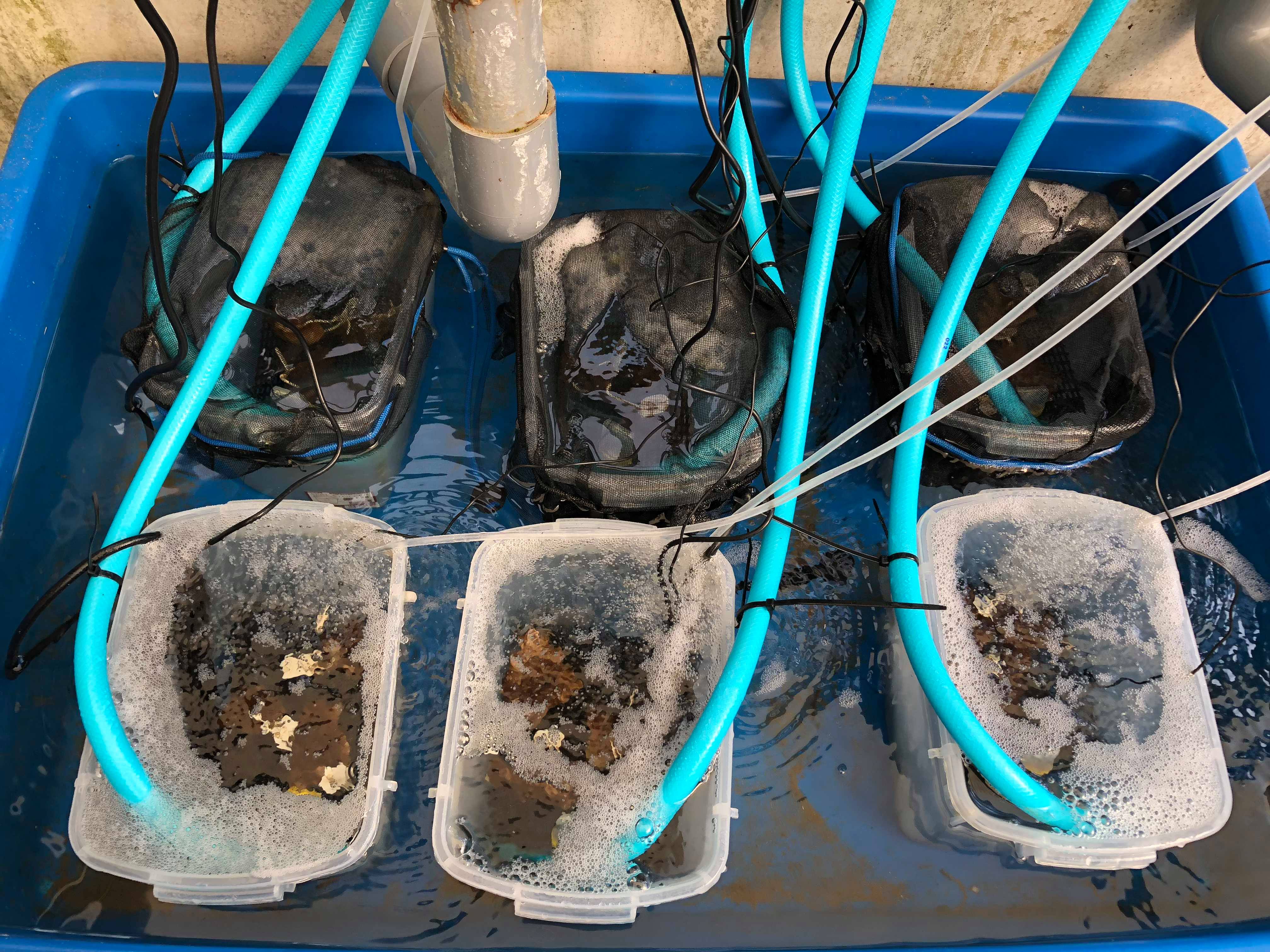Research (Mayumi Kuroyama)
Investigating enviromental responses of a temperate coral species Acropora solitaryensis with the aim of achieving more accurate prediction of future habitat distribution.
Hermatypic corals are ecosystems with one of the greatest biodiversity on this planet.
However, recent global warming has imposed serious threats on corals and their habitats are moving northward as if they were running away from too warm ocean.
In order to figure out how their habitat distibution is going to change in the future, mathematical simulation has been conducted. However, the accuracy of predicted habitat holds great uncertainty due to lack of understanding in coral reponses to environmental stresses.
For example, the lowest temperature limit of Acropora solitaryensis, a dominant coral species in temperate areas, is known to be around 14+℃ though the combined effect of cold temperature and low light intensity remain uncertain.
Therefore, this research aims to find out the effect of low light intensity on A.solitaryensis under winter temperature conditions.
|
1. Acropora solitaryensis This is how A.solitaryensis sample looks like. All the samples used for this experiment are collected under permit.  |
2. Outdoor tanks with continuous seawater circulation In order to reproduce the in situ fluctuation of seawater temperature, the experiment has been conducted using outdoor tanks at Shimoda Marine Research Center, Shizuoka.  |
3. Temperature and light treatments A.solitaryensis samples are exposed to four treatments;Ambient temperature + ambient light intensity, elevated temperature(+2℃) + reduced light intensity(25%), ambient temperature + reduced light intensity(25%) and elevated temperature(+2℃) + reduced light intensity(25%) Photosynthetic efficiency and buoyancy weight are measured every other week.  |
|
4. Photosynthetic efficiency Photosynthetic efficiency of A.solitaryensis is measured using a junior PAM followed by 30 minutes of dark adaptation.  |
5. Buoyancy weight The buoyancy weight is essentially measuring the weight of the calcium carbonate skeleton as the coral tissues have almost equivalent densities to seawater.  |
